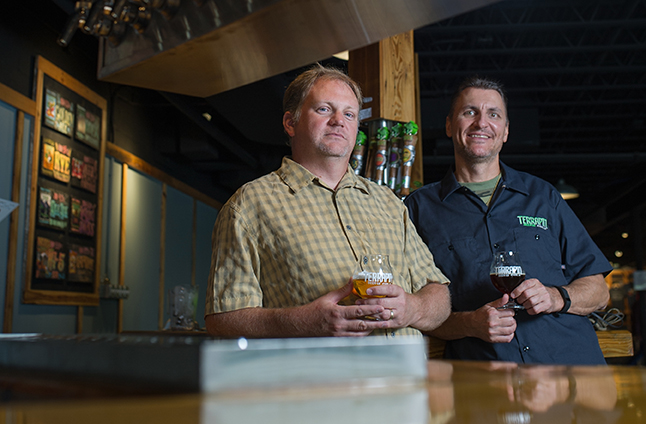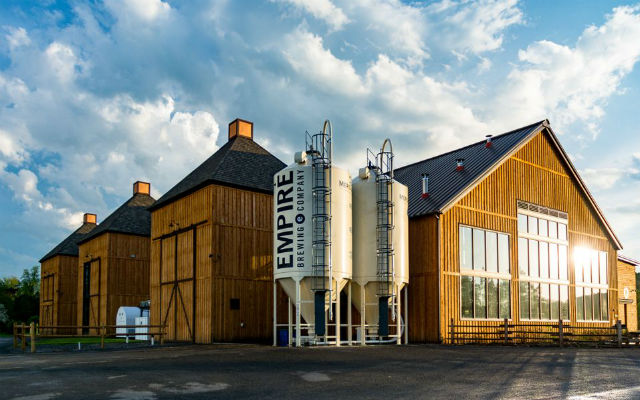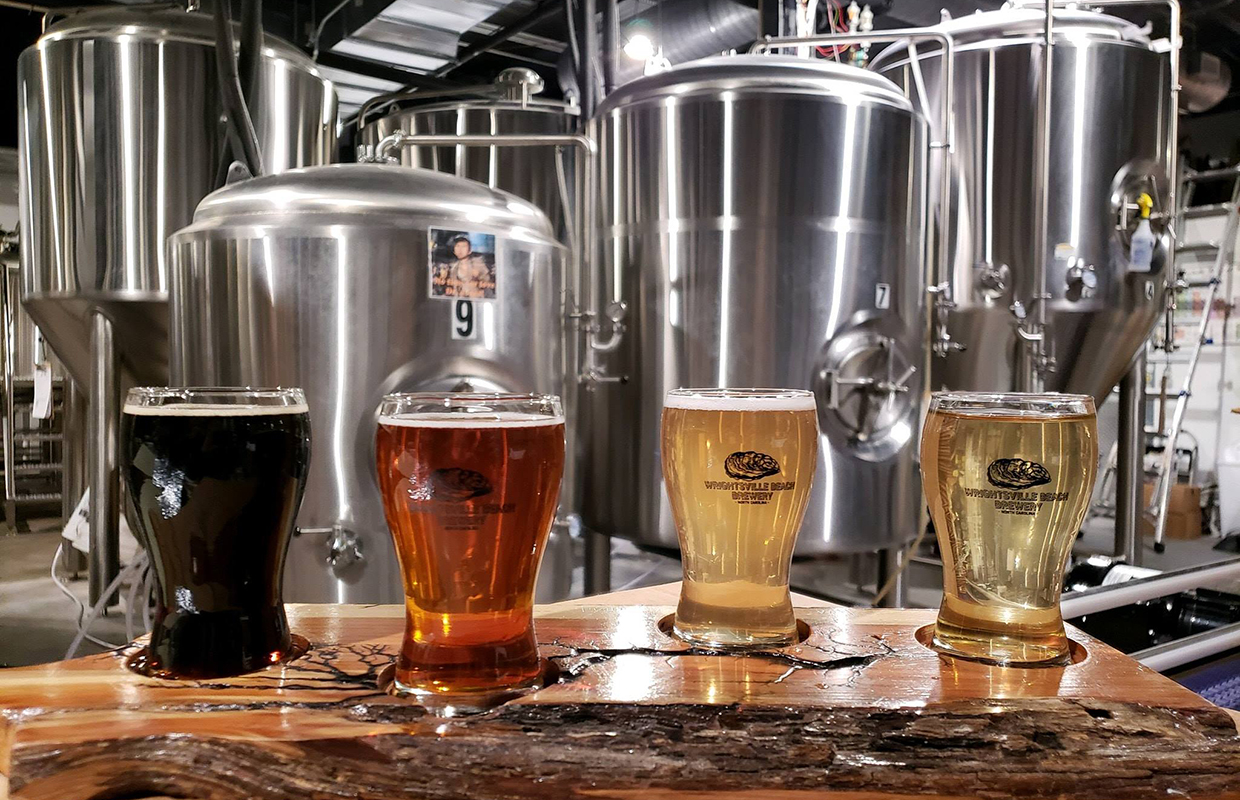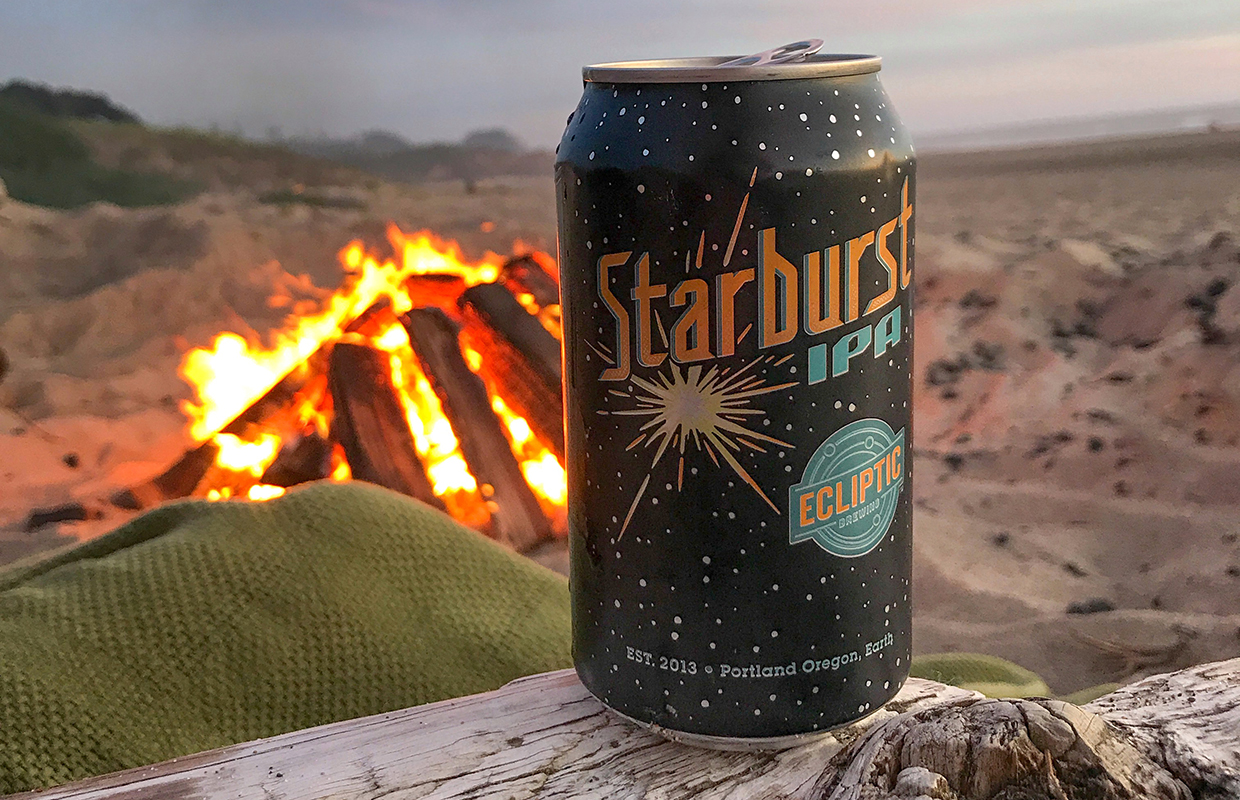
For a lot of rapidly growing breweries in today’s market the feeling of middle-child syndrome could be an everyday reality. While growth and opportunity are at the fingertips of breweries throughout the U.S., there is one complicated scenario, and that’s finding yourself somewhere in the middle.
John Cochran, a co-founder of Terrapin Beer Company, said just that. He and Brian “Spike” Buckowski’s company in Athens, Georgia, has been growing precisely as they desired from day one.
With the imagery of a terrapin, they wanted a company that wasn’t fast out of the gate and trailed at the end, but instead maintained a consistent pattern of growth over several years. While as a Georgia brewery with all its regulations may have seemed impossible in the beginning, Cochran and Buckowski discovered that they had designed a company with specifically that growth pattern, which has never slowed for them.
However, as they progress into the company’s next phases — currently producing 60,000 bbls a year, with eyes still set on 100,000 bbls — Cochran feels they may not be in the best possible place in regards to brewery size and distribution.
Will they continue to grow? Sure, but how much can they grow and what does competition look like for a company like Terrapin Beer?
It wasn’t until 2006 for Terrapin Beer Company when it finally found a home. “It was all ready by July of 2007, but because of regulations I don’t think we brewed our first batch until December [2007],” explained Buckowski.
“There was a big issue at the time with the tours and department of revenue,” said Cochran. “The ways the laws are written, there is no self-distribution and no sales at the brewery, you have to go big or forget about it. If you notice Georgia, up to 41 or 42 breweries now, you’ll notice there are no nano breweries like you have all over the rest of the country. We can’t do that here.”
Prior to 2007 Terrapin Beer had been contract brewing and slowly developing distribution. They had won a couple of GABF awards and that had helped them gain attention from distributors, but they simply weren’t making enough beer to service all the areas that were requesting beer. Additionally, due to the inability to sell at the brewery, the only source of revenue was distribution, both in state and out-of-state, as well as investment — it was the latter that helped them reach the goal of owning a brewery in 2006-2007.
Once the brewery was opened the Georgia Department of Revenue would allow tours with a certain amount of beer to be sampled after the tour. However, recently that has been altered and Terrapin decided to completely shut down its tours and samplings until further notice.
“It was specifically written into the law that if you get caught selling retailed beer, the first offense is a one-year loss of your tasting room license,” explained Cochran. “So, the entire tour would be done for the year and we aren’t playing around with that.”
To escape all the legal issues that prevent a lot of breweries from developing in Georgia, Terrapin used the same approach it has for the vast majority of its business — focus on the mission, stay consistent and slowly move forward.
“There was a lot of talk early on about just being 5,000 bbls, draft only,” said Cochran. “To get to a certain size you realize we’re still losing money, still not making money, so you get a little bigger. We’re in 12 states now plus D.C. and it was only three or four years ago that we started making money.”
Like many early brewing stories, Cochran nor Buckowski didn’t take a paycheck for several years into the business. They had other full-time jobs and allocated most of the money from Terrapin to sales reps and other positions.
“For me [opening the brewery] was a godsend, because trying to contract brew and trying to come up with more creative recipes and having those brewers do them, it was just so much easier here,” said Buckowski. “So we were out there for five years (2002-2007), but we didn’t have a home until five years later.”
Not only did solidifying a brewery help with production, but it also helped with becoming a more legitimate brand for consumers. “When we started the tours, obviously it varies every year, but we’re running 50-60,000 people a year tasting the beer, looking at the equipment, seeing what we’re doing,” explained Cochran. “That’s the best marketing you can have.”
When Terrapin first opened the tagline was “Extreme Beers for Extreme Taste.” “But as you know, back in 2002 Doritos were extreme, deodorant was extreme — everything was extreme,” explained Buckowski.
“When we first started all we ever heard from people was: ‘this is too aggressive, I can only drink one of these beers,’” said Cochran. “It’s amazing how much people’s tastes have changed in the past 14 years.”
Today the Rye Pale Ale that Terrapin kicked off with is almost just an expectation in the rotation of beers from typical beer consumers. “It’s still really good, don’t get me wrong,” said Cochran. “But today it’s all IPA, double IPA and hop, hop, hop now. It’s just crazy.”
For a tiny bit of perspective from where Buckowski and Cochran have seen brewing evolve in the south, while a lot of the country in 2002 was experience somewhat of a craft movement, the south was still really focused on Bud, Miller and Coors products.
“As you know, once you leave the macro beer scene, you don’t go back,” said Buckowski. “You might get some for the lake or something, or you might buy some to put in your fridge while you stash the good stuff in your basement fridge. That’s why all these big breweries are looking around, because they are losing market share, because you don’t go backwards.”
A few things Terrapin always has been is concerned with owning the majority of the company, but also being in Athens, Georgia, regardless of frustrating Georgia laws. “Personally, I always wanted Athens to be proud of Terrapin,” said Buckowski. “I think they are. We do a lot of community work, we’re engrained in the city; so for us it was like I wanted Terrapin to be synonymous with Athens as a beer town. Now we’re starting to get there, but from 2002 to about 2013 there was only us and the brewpub.”
Now Athens has two other operational breweries in Creature Comforts and Southern Brewing Company. “We didn’t want to come in and fail, and become a brewery that wasn’t good,” said Buckowski. “Being from Athens absolutely helps because it’s a great music town, but now it’s becoming a great beer town.”
Terrapin still has its goals set on the future. While they may enjoy moving at more of a terrapin speed, they have grown around 30 percent every year. Additionally, they’ve yet to reach Buckowski’s goal of 100,000 bbls. a year. However, while sitting at around 60,000 today, that number is well within reach.
“Let’s be honest,” said Cochran. “We were just two guys that loved beer and started a company. We didn’t open up with a mission statement, vision and five year plan and all that. We just made some beer and hoped it worked.”
“It’s so much different now where 10 years ago we begged distributors to take our beer,” said Buckowski. “Now we have distributors calling us, but it’s a totally different process. We don’t have any distributor have our brand until you physically come to the brewery, learn about the cultures, see the brewery, go out in Athens and feel what Terrapin is about.”
Not only did solidifying a brewery help with production, but it also helped with becoming a more legitimate brand for consumers. “When we started the tours, obviously it varies every year, but we’re running 50-60,000 people a year tasting the beer, looking at the equipment, seeing what we’re doing,” explained Cochran. “That’s the best marketing you can have.”
When Terrapin first opened the tagline was “Extreme Beers for Extreme Taste.” “But as you know, back in 2002 Doritos were extreme, deodorant was extreme — everything was extreme,” explained Buckowski.
“When we first started all we ever heard from people was: ‘this is too aggressive, I can only drink one of these beers,’” said Cochran. “It’s amazing how much people’s tastes have changed in the past 14 years.”
Today the Rye Pale Ale that Terrapin kicked off with is almost just an expectation in the rotation of beers from typical beer consumers. “It’s still really good, don’t get me wrong,” said Cochran. “But today it’s all IPA, double IPA and hop, hop, hop now. It’s just crazy.”
For a tiny bit of perspective from where Buckowski and Cochran have seen brewing evolve in the south, while a lot of the country in 2002 was experiencing somewhat of a craft movement, the south was still really focused on Bud, Miller and Coors products.
“As you know, once you leave the macro beer scene, you don’t go back,” said Buckowski. “You might get some for the lake or something, or you might buy some to put in your fridge while you stash the good stuff in your basement fridge. That’s why all these big breweries are looking around, because they are losing market share, because you don’t go backwards.”
A few things Terrapin always has been concerned is with owning the majority of the company, but also being in Athens, Georgia, regardless of frustrating Georgia laws. “Personally, I always wanted Athens to be proud of Terrapin,” said Buckowski. “I think they are. We do a lot of community work, we’re engrained in the city; so for us it was like I wanted Terrapin to be synonymous with Athens as a beer town. Now we’re starting to get there, but from 2002 to about 2013 there was only us and the brewpub.”
Now Athens has two other operational breweries in Creature Comforts and Southern Brewing Company. “We didn’t want to come in and fail, and become a brewery that wasn’t good,” said Buckowski. “Being from Athens absolutely helps because it’s a great music town, but now it’s becoming a great beer town.”
Terrapin still has its goals set on the future. While they may enjoy moving at more of a terrapin speed, they have grown around 30 percent every year. Additionally, they’ve yet to reach Buckowski’s goal of 100,000 bbls. a year. However, while sitting at around 60,000 today, that number is well within reach.
“Let’s be honest,” said Cochran. “We were just two guys that loved beer and started a company. We didn’t open up with a mission statement, vision and five year plan and all that. We just made some beer and hoped it worked.”
“It’s so much different now where 10 years ago we begged distributors to take our beer,” said Buckowski. “Now we have distributors calling us, but it’s a totally different process. We don’t have any distributor have our brand until you physically come to the brewery, learn about the cultures, see the brewery, go out in Athens and feel what Terrapin is about.”
Not only did solidifying a brewery help with production, but it also helped with becoming a more legitimate brand for consumers. “When we started the tours, obviously it varies every year, but we’re running 50-60,000 people a year tasting the beer, looking at the equipment, seeing what we’re doing,” explained Cochran. “That’s the best marketing you can have.”
When Terrapin first opened the tagline was “Extreme Beers for Extreme Taste.” “But as you know, back in 2002 Doritos were extreme, deodorant was extreme — everything was extreme,” explained Buckowski.
“When we first started all we ever heard from people was: ‘this is too aggressive, I can only drink one of these beers,’” said Cochran. “It’s amazing how much people’s tastes have changed in the past 14 years.”
Today the Rye Pale Ale that Terrapin kicked off with is almost just an expectation in the rotation of beers from typical beer consumers. “It’s still really good, don’t get me wrong,” said Cochran. “But today it’s all IPA, double IPA and hop, hop, hop now. It’s just crazy.”
For a tiny bit of perspective from where Buckowski and Cochran have seen brewing evolve in the south, while a lot of the country in 2002 was experiencing somewhat of a craft movement, the south was still really focused on Bud, Miller and Coors products.
“As you know, once you leave the macro beer scene, you don’t go back,” said Buckowski. “You might get some for the lake or something, or you might buy some to put in your fridge while you stash the good stuff in your basement fridge. That’s why all these big breweries are looking around, because they are losing market share, because you don’t go backwards.”
A few things Terrapin always has been concerned is with owning the majority of the company, but also being in Athens, Georgia, regardless of frustrating Georgia laws. “Personally, I always wanted Athens to be proud of Terrapin,” said Buckowski. “I think they are. We do a lot of community work, we’re engrained in the city; so for us it was like I wanted Terrapin to be synonymous with Athens as a beer town. Now we’re starting to get there, but from 2002 to about 2013 there was only us and the brewpub.”
Now Athens has two other operational breweries in Creature Comforts and Southern Brewing Company. “We didn’t want to come in and fail, and become a brewery that wasn’t good,” said Buckowski. “Being from Athens absolutely helps because it’s a great music town, but now it’s becoming a great beer town.”
Terrapin still has its goals set on the future. While they may enjoy moving at more of a terrapin speed, they have grown around 30 percent every year. Additionally, they’ve yet to reach Buckowski’s goal of 100,000 bbls. a year. However, while sitting at around 60,000 today, that number is well within reach.
“Let’s be honest,” said Cochran. “We were just two guys that loved beer and started a company. We didn’t open up with a mission statement, vision and five year plan and all that. We just made some beer and hoped it worked.”
“It’s so much different now where 10 years ago we begged distributors to take our beer,” said Buckowski. “Now we have distributors calling us, but it’s a totally different process. We don’t have any distributor have our brand until you physically come to the brewery, learn about the cultures, see the brewery, go out in Athens and feel what Terrapin is about.”





How is the MillerCoors capital infusion working out?